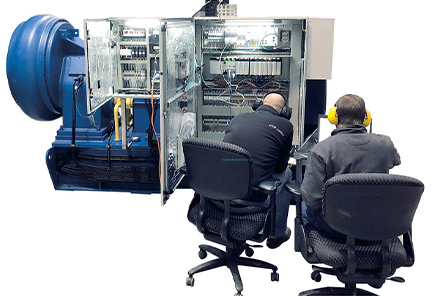Programmable Logic Controllers (PLCs) are at the heart of automation in many industrial settings. From manufacturing plants to power generation facilities, PLCs play a crucial role in controlling and monitoring various processes. However, PLC programming can be intimidating for beginners. In this step-by-step guide, we will demystify PLC programming and provide you with a foundation to master industrial automation.
Step 1: Understand the Basics
Before diving into PLC programming, it is important to have a solid understanding of the basics. Familiarize yourself with the different types of PLCs available in the market and their key components. Learn about the various programming languages used in PLC programming, such as ladder logic, function block diagrams, and structured text.
Step 2: Define Your Objectives
To effectively program a PLC, you need to clearly define your objectives. Determine what you want the PLC to control or monitor and identify the inputs and outputs required. Create a detailed specification that outlines the functionality and requirements of your automation system.
Step 3: Plan Your Program
Before writing any code, it is essential to plan your program. Break down your automation system into smaller tasks and determine the logical sequence of operations. Create a flowchart or ladder diagram to visualize the control flow. This will help you identify the necessary input and output conditions and plan the structure of your program.
Step 4: Write the Code
Once you have planned your program, it is time to write the code. Select the appropriate programming language based on your objectives and the capabilities of your PLC. Start by creating the necessary variables and define their data types. Then, write the logic that controls the behavior of your automation system. Use conditional statements, loops, and other programming constructs to handle different scenarios and ensure the correct sequence of operations.
Step 5: Test and Debug
After writing the code, it is crucial to thoroughly test and debug your program. Use a simulator or a physical PLC to execute your code and verify its functionality. Monitor the input and output signals to ensure they are behaving as expected. Debug any errors or unexpected behavior by reviewing your code and making necessary adjustments.
Step 6: Document Your Program
Documentation is an essential part of PLC programming. Take the time to document your program, including comments that explain the purpose and functionality of each section of code. This will not only make it easier for you to understand and maintain your program but also for others who might work on the system in the future.
Step 7: Maintain and Update
Industrial automation systems are constantly evolving, and so should your PLC programs. Regularly maintain and update your programs to ensure they remain efficient and reliable. Keep track of any changes made, update your documentation accordingly, and test the updated program thoroughly before deploying it in a production environment.
Step 8: Continuously Learn and Improve
PLC programming, like any other skill, requires continuous learning and improvement. Stay up-to-date with the latest advancements in PLC technology and programming techniques. Attend workshops, read books and articles, and engage with the PLC programming community to expand your knowledge and enhance your skills.
Conclusion
PLC programming may seem complex at first, but by following this step-by-step guide, you can demystify the process and become a master of industrial automation. Remember to understand the basics, define your objectives, plan your program, write the code, test and debug, document your program, maintain and update, and continuously learn and improve. With practice and dedication, you will gain the expertise to program PLCs and automate various industrial processes with ease.
